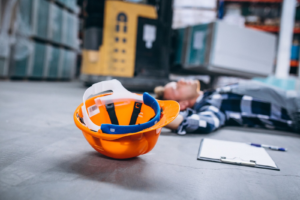
Essential Components for Environment Friendly Landscape Planning and Designing for Industrial Facilities
General Introduction
In today’s modern world, sustainable and eco-friendly practices have become paramount in all sectors of industry, and landscape planning and design for industrial facilities are no exception. Environmental consciousness is on the rise, and industrial facilities such as factories, warehouses, and manufacturing units must strive to minimize their ecological footprint while maintaining functionality. This article will take a deep dive into the best practices for landscape planning and designing for industrial facilities that are not only sustainable and eco-friendly but also promote harmonious coexistence with the surrounding environment.
Key Components of Sustainable Landscape Planning for Industrial Facilities
Let us discover the essential components that underpin sustainable landscape planning for different types of industrial facilities. From construction site analysis to native plant integration, water efficiency, green infrastructure, and more, explore all the crucial strategies that enable industrial sites to coexist harmoniously with the environment while reducing their ecological footprint.
1. Site Assessment and Analysis
Before embarking on any landscape planning and design project, a thorough evaluation of the construction project site and its analysis are essential. This involves understanding the natural features of the industrial construction site, including topography, soil quality, water bodies, and native vegetation. An in-depth site assessment enables planners to make informed decisions about how to best integrate the facility into the environment.
2. Native Plants and Biodiversity
One of the most important principles of sustainable landscaping is the utilization of native plants. They require less maintenance, water, and fertilizer. Furthermore, the native plants support local wildlife and contribute to the overall biodiversity of the area. Introducing native plants into the landscape design of an industrial facility not only reduces the facility’s ecological impact but also enhances its aesthetic appeal.
3. Water Efficiency
Industrial facilities often require significant amounts of water for different activities and operations. Implementing water-efficient landscape design is crucial for minimizing water consumption and its waste as well. Techniques such as xeriscaping, rain gardens, and efficient irrigation systems can be employed to minimize the waste of water. Additionally, the use of permeable surfaces can help manage storm water runoff, preventing soil erosion and water pollution.
4. Green Infrastructure
Integrating green infrastructure elements, such as green roofs and living walls, into industrial building landscape design can offer several benefits to business owners. Green roofs help insulate industrial spaces, reduce energy consumption, and mitigate the urban heat island effect. Living walls not only improve air quality but also act as natural air filters, improving the overall environment for employees and the surrounding community.
5. Wildlife Habitat
Creating wildlife habitats within the industrial building’s landscape can be a proactive approach to conservation. Designing areas with diverse species of plants, water features, and nesting sites can attract a number of wildlife species. Maintaining a balance between industrial requirements and the natural environment encourages biodiversity and ecological resilience.
6. Sustainable Materials and Practices
Going for sustainable materials for landscape construction is of vital importance for reducing the carbon footprint of industrial structures. Recycled and locally sourced materials whenever and wherever possible incorporate eco-friendly construction practices to minimize disruption to the environment during installation.
7. Energy Efficiency
The placement of landscape elements can significantly impact the energy efficiency of an industrial space. Strategically planting trees and shrubs can provide shade and reduce the need for air conditioning during the summer months. Properly designed windbreaks can significantly minimize energy consumption by protecting industrial buildings from harsh winds. These practices not only conserve energy but also reduce operational costs for industries.
8. Maintenance and Monitoring
Sustainability does not end with the completion of the landscape project. Regular maintenance and monitoring are important to ensure that the landscape continues to thrive and meet its environmental objectives. Implement a detailed and systematic maintenance plan that includes practices such as mulching, pruning, and pest control, all while minimizing the use of harmful chemicals.
Wrapping Up
Incorporating environmentally friendly landscape planning and design practices into industrial facilities is not only an ethical choice but also a strategic one. Such practices not only minimize environmental impact but also enhance the image of the industrial facility, improve employee well-being, and contribute to long-term cost savings. By conducting thorough site evaluations, utilizing native plants, prioritizing water and energy efficiency, and embracing sustainable materials for construction, industrial spaces can become models of environmental responsibility while maintaining their functionality and productivity. It is time for industries to embrace these best practices and take a leading role in the journey towards a sustainable future.





